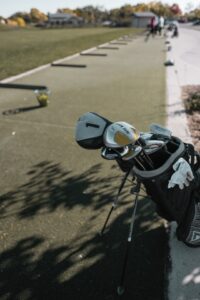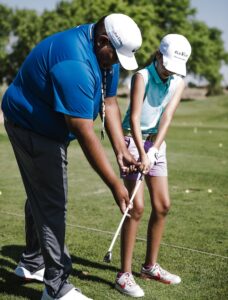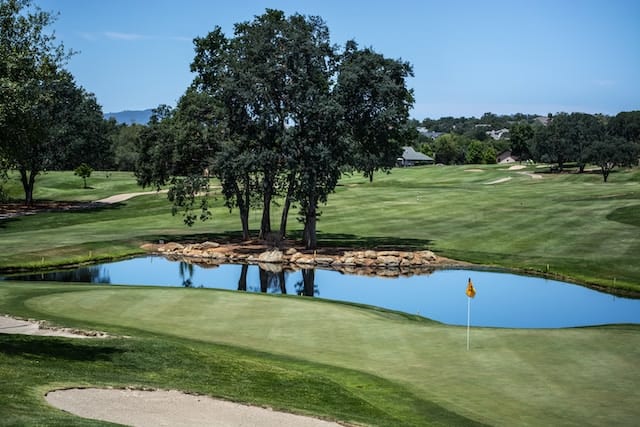If you are like most golfers you’ve likely experienced the dreaded golf slice. That frustrating shot that starts straight and veers off to the right (for right-handed players) or left (for left-handed players), leaving you scrambling to find your golf balls in the rough. The golf slice is a common problem that plagues golfers of all skill levels, but fear not! In this comprehensive guide, we will delve into the causes behind a golf slice and provide you with effective tips and techniques to correct it.
Whether you’re a beginner or an experienced golfer, by understanding the root causes and implementing the strategies outlined here, you’ll be well on your way to hitting those straight, accurate golf shots you’ve always desired.
Overview
Introduction
The importance of fixing a golf slice
1. Understanding the Golf Slice
2. Correcting Your Golf Slice
3. Practice Drills and Exercises
4. Additional Tips and Precautions
Conclusion
The importance of fixing a golf slice
Fixing your golf slice is crucial for golfers looking to enhance their game and achieve better results on the golf course. A golf slice can significantly impact your accuracy, distance, consistency, and overall enjoyment of the game. By addressing and correcting your slice, you can experience a multitude of benefits.
Firstly, fixing your golf slice improves accuracy by allowing you to hit the fairways more consistently and reach your desired targets with precision. Secondly, it increases distance as a slice often results in a loss of power and distance. By correcting your slice, you can maximize your golf swing potential and hit the golf ball farther down the fairway. Additionally, fixing your slice enhances consistency by establishing a more reliable swing path and club face alignment, leading to greater shot-to-shot consistency. And who doesn’t want that?
Fixing your golf slice is essential for improving accuracy, increasing distance, achieving consistency, lowering scores, and boosting confidence. It paves the way for a more rewarding and successful golfing journey. And If you don’t fix it as soon as possible you will probably slice forever. So let’s teach you how to fix a slice in golf.

1. Understanding the Golf Slice
To fix a golf slice, it’s crucial to first understand its causes. A slice occurs when the golf ball spins excessively in a clockwise direction (right-handed golfer), causing it to curve away from the target. Here are the primary factors we have identified that contribute to a slice.
Grip
An improper grip is a leading cause of a golf slice. A weak grip, where the hands rotate too far to the left (for right-handed players), tends to produce an open club face at impact, promoting a slice.
Alignment
Misalignment of the body and club face can also lead to a slice. If your shoulders, hips, or feet are open at address, it creates a swing path that crosses the target line from the outside, resulting in a slice.
Swing Path
A golf swing that comes from an over-the-top motion, where the golf club approaches the ball from outside the target line, can induce a slice. This path promotes an out-to-in swing, which leads to the side spin on the golf ball.

2. Correcting Your Golf Slice
Now that you understand what actually is causing your slice, let’s dive into practical strategies to fix your golf slice.
2.1 Proper Grip and Alignment
Grip
Ensure you have a neutral grip with both hands, neither too weak nor too strong. This neutral grip promotes a square club face at impact, reducing the likelihood of a slice.
Alignment.
Square your shoulders, hips, and feet parallel to the target line. Use alignment aids, such as golf clubs or alignment sticks, to reinforce correct positioning and give you the right conditions to hit the ball straight.
2.2 Backswing and Downswing Adjustments
Backswing
Focus on a one-piece takeaway and avoid over-rotating your hands and wrists. A compact back swing with a good wrist hinge will help you maintain control and prevent an open clubface.
Downswing
Initiate the downswing with your lower body, ensuring that your hips rotate toward the target before your arms. This promotes an inside-to-out swing path, reducing the chances of having a steep swing that will give you a slice.
2.3 Clubface Control and Impact
Square Clubface
Concentrate on squaring the clubface at impact by keeping your lead wrist flat and avoiding excessive hand rotation. This promotes the straight-ball flight we are looking for.
Impact Factors
Maintain a balanced finish, with your weight on your front foot and your chest and upper body facing the target. This position encourages a solid strike and minimizes slicing tendencies.

3. Practice Drills and Exercises
Alignment Drill
In this practice drill, you will need to set up two alignment sticks parallel to the target line, ensuring your feet, hips, and shoulders are aligned. Practice hitting shots while maintaining this alignment, and it will force you to keep the correct path.
Swing Path Drill
Place an object, such as a headcover, just outside your target line. Focus on swinging the golf club underneath the object during your downswing to promote an in-to-out path.

4. Further Tips and Precautions
To consolidate your progress in fixing your golf slice, consider the following additional tips.
Seek Professional Help
Consider taking lessons from a golf professional who can assess your swing and provide personalized guidance to correct your slice.
Video Analysis
Record your swing from different angles and analyze it to identify areas that need improvement. This visual feedback can be invaluable in understanding your swing mechanics.
Mental Approach
Don’t get discouraged. Fixing a slice takes time and practice. Approach each shot with confidence and a positive mindset.
Equipment Considerations
Assess your equipment, particularly the shaft flex and club head design. Consult with a professional club fitter to ensure your golf clubs are suited to your swing and can help minimize slicing tendencies.

Conclusion
Congratulations on completing this comprehensive guide on fixing a golf slice! By understanding the causes and effects of a slice, implementing the suggested techniques, and committing to consistent practice, you’re well on your way to improving your golf game and hitting straighter, more accurate shots.
Additionally, consider evaluating your equipment to ensure it complements your swing. Consult with a professional club fitter to determine if adjustments, such as shaft flex or clubhead design, can help minimize slicing tendencies.
So, step onto the golf course with confidence, armed with the knowledge and techniques gained from this guide. Put in practice, embrace the adjustments, and watch your golf slice become a thing of the past. Keep a positive attitude, enjoy the game, and let your improved swing bring you closer to achieving your golfing goals.
Best of luck in your golfing endeavors. May your future rounds be filled with more fairways, fewer roughs, and a whole lot of enjoyment. Happy golfing!

